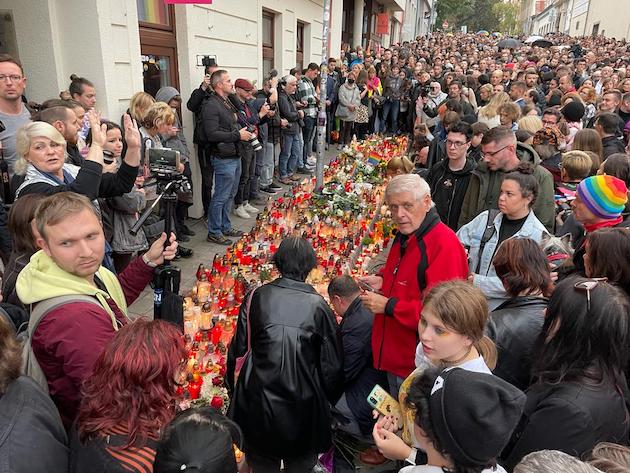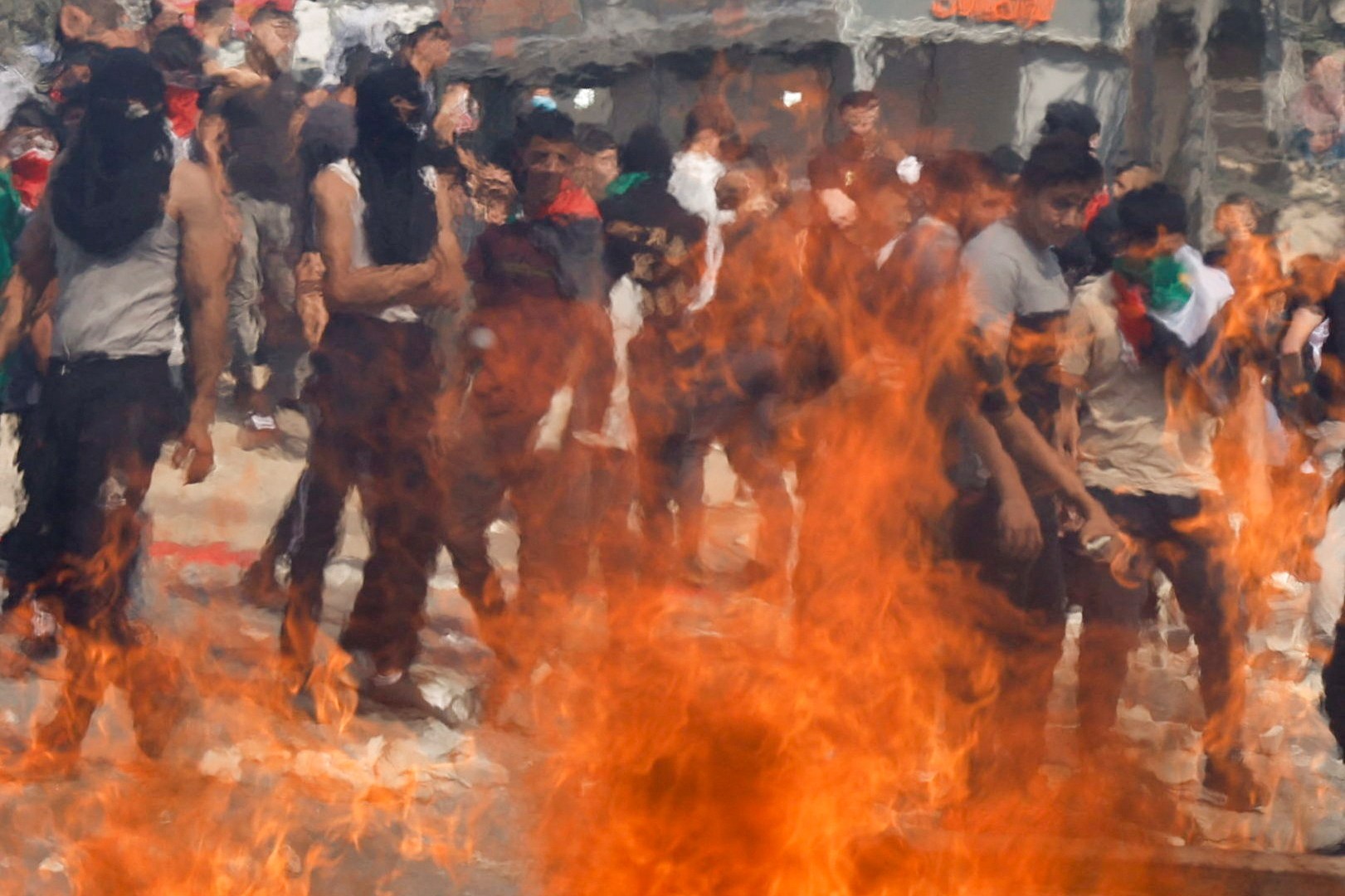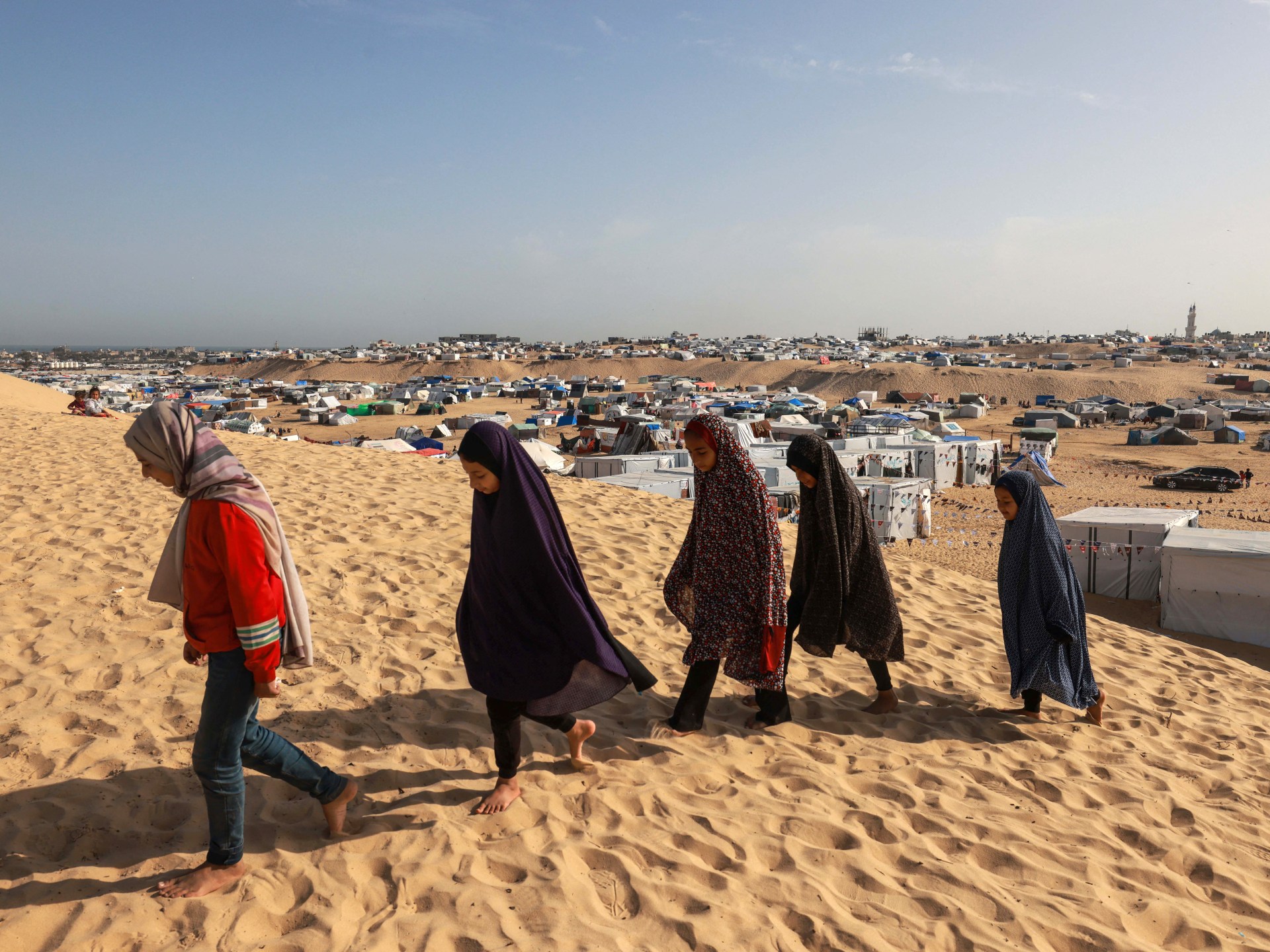Gaza’s al-Shifa hospital evacuated; Israel expands attacks in north
The Israel Defense Forces (IDF) said in a statement that it was “expanding activities” in these two regions “in order to target terrorists and strike Hamas infrastructure” and that its troops were backed by warplanes. Israel has made northern Gaza the focus of its initial ground incursion, sending tanks to divide the territory in two, while urging hundreds of thousands of residents to leave for the south.
But many people have stayed in their homes or in shelters in the north. In Jabalya, “hundreds” of people were killed or wounded in attacks on two schools Saturday, according to the Gaza Health Ministry, which attributed the strikes to Israel. The IDF said it was “checking” on the reports.
Footage of the attack’s aftermath at al-Fakhoura school, which is operated by the U.N. agency for Palestinian refugees, showed bloodied, distorted bodies crammed among the desks of a classroom, as well as dead and injured strewn on the playground, many of them children.
It was not immediately possible to verify the toll. Across northern Gaza, hospitals have collapsed, leaving doctors and medical staff unable to conduct their own tallies of the dead. The Gaza Health Ministry last updated its death toll for the war Nov. 10, when it said more than 11,000 people had been killed.
The head of the U.N. agency, known as UNRWA, said he had seen the videos showing the carnage at the schools, which he described as “horrifying” and appealed for an immediate cease-fire. “These attacks cannot become commonplace. They must stop,” said Philippe Lazzarini, UNRWA’s commissioner general.
The expanded attacks came as the crisis at Gaza’s al-Shifa Hospital appeared to be drawing to a close, with the reported evacuation Saturday of the vast majority of patients, staff and civilians who remained trapped there for days with little food, water or electricity as Israeli forces operated inside the complex.
Israel has repeatedly claimed that the hospital housed a Hamas command center but so far has not produced compelling evidence, apart from the seizure of a number of guns and some uniforms since troops stormed the facility this week. Israel launched its offensive in Gaza on Oct. 7, after Hamas and allied militants stormed Israeli communities on the border, killing at least 1,200 people in massacres that lasted hours.
Medical staff at al-Shifa Hospital said they received an ultimatum from Israeli forces Saturday morning to evacuate within an hour, triggering an exodus from the beleaguered facility that became a symbol of the extent of the suffering in Gaza.
Hundreds of Palestinians, including wounded patients, medical staff and civilians, streamed out of the hospital and into the heart of Gaza City on foot. Videos posted on social media showed dozens of people walking away from the facility clutching bundles of possessions. Some were waving white flags; a few of the most elderly and infirm were pushed on rudimentary carts as Israeli troops positioned on tanks watched on.
The IDF denied that it had issued an order to evacuate al-Shifa Hospital, saying it had merely offered to facilitate the safe exit of doctors and patients. The competing claims could not be verified, but the departure of most of the patients and local residents who had taken refuge in the hospital seemed to herald an end to one of the grimmest chapters in the war so far.
Five medical staff members, including the hospital director and the head of the surgery department, remained behind along with 120 patients too sick to be moved, said Munir al-Bursh, the director of the Gaza Health Ministry who was among those who left the facility. Adnan al-Bursh, head of the emergency department, told the Al Jazeera news network that premature babies were among those left behind.
Hours later, the fate of those who stayed behind was unclear amid a near-total blackout of communications.
The evacuees, meanwhile, headed for southern Gaza, which Israel declared “safe” but which is also being subjected to airstrikes. At least 47 people were killed in two airstrikes on residential buildings Saturday in the southern town of Khan Younis, Reuters reported.
A Washington Post photographer witnessed a throng of displaced people — including sick people, women, children and the elderly — making their way down Salah al-Din Road, the main artery leading from north to south. There was shelling and shooting nearby, and the smell of death and gunpowder hung in the air. Many traveled the 15-mile route by foot or on donkey carts. Men carried toddlers on their hips or shoulders, while older children walked on their own, clutching backpacks with just a handful of possessions.
Tasaheel Hamad said she left al-Shifa on Saturday with several family members, including two cousins who had to be carried. The conditions they left behind at the hospital were nightmarish, Hamad said. There was little food or hygiene, and no way to change patients’ bandages, allowing wounds to fester.
“Tanks surrounded us at al-Shifa constantly, and the people there couldn’t sleep at night; there was no rest at all. We were constantly worried,” she said. Some people without any family to help them were left behind, she added.
“We pray to God to help them,” she said.
To ease the crisis in Gaza, Hamas should release the more than 200 hostages it seized on Oct. 7 in exchange for aid, President Biden’s top adviser on the Middle East said Saturday.
“Such a release of a large number of hostages would result in a significant pause in fighting,” and a “massive surge of humanitarian relief,” Brett McGurk told a security summit in Bahrain.
A tentative agreement reached by Israel, the United States and Hamas could lead to a sustained pause in the conflict and the release of dozens of women and children from captivity within the next 48 hours, according to people familiar with its terms. The six-page agreement would also increase the amount of humanitarian assistance flowing into Gaza.
Earlier Saturday, thousands of Israelis converged on Prime Minister Benjamin Netanyahu’s office in Jerusalem to demand an immediate solution to the hostage crisis.
“We are asking for a deal that brings everyone home today,” Yaela David, whose brother Evyatar was abducted Oct. 7, told the crowd.
Netanyahu addressed the hostage families at a news conference Saturday night and reiterated his vow to keep fighting “until Hamas is destroyed,” despite international pressure to rein in Israel’s punishing strikes in Gaza.
Also Saturday, tensions flared on the Israel-Lebanon border, where Israeli forces and Hezbollah fighters have traded fire on a regular basis since the war began.
The IDF said that 25 rockets were fired from Lebanon into Israel, causing no casualties, and that its forces were striking the sources of fire and “additional” Hezbollah sites, without giving further details.
Overnight, Israeli fighter jets and helicopters struck Hezbollah targets deep inside Lebanon, hitting an aluminum factory on the edge of the city of Nabatiyeh, among other targets, according to a Hezbollah spokesperson and videos posted online.
It was the first time Nabatiyeh, which lies 12 miles north of the Israeli border, had been bombed since the 2006 war between Israel and Hezbollah in Lebanon and came amid a creeping escalation in the intensity and range of the clashes.
The United States has warned both Israel and Hezbollah not to expand the fighting for fear that the conflict could lead to a wider Middle East war that would devastate Lebanon and perhaps spread to Syria and Iraq.
Sly reported from Beirut, Balousha from Amman, Jordan, and Ayyoub from Khan Younis in the Gaza Strip. Carrie Keller-Lynn and Lior Soroka in Tel Aviv, Sarah Dadouch in Beirut, and Susannah George in Manama, Bahrain, contributed to this report.
Check out our Latest News and Follow us at Facebook
Original Source






